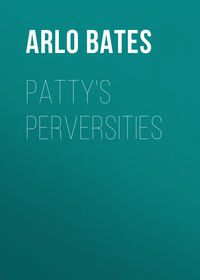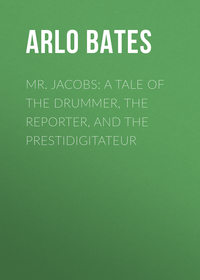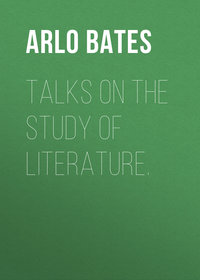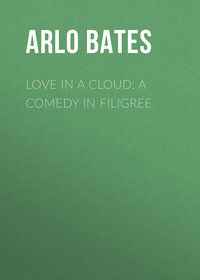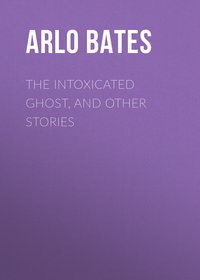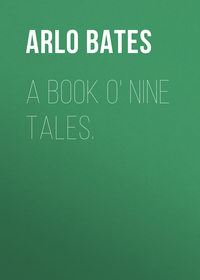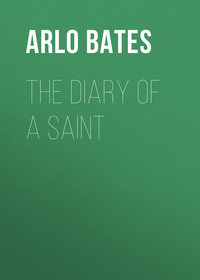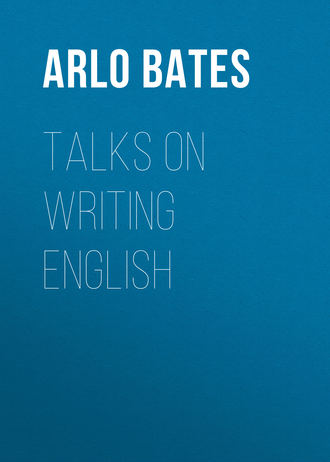 полная версия
полная версияTalks on Writing English
1. The discovery of America by the Norsemen is proved by the allusions in pre-Columbian literature to a land over sea.
a. Citation of passages.
b. Proofs that these do not refer to the Eastern Hemisphere.
c. Proofs that they are not mythical allusions.
d. Proofs that they do refer to America.
e. Proofs that the knowledge shown came from Norsemen.
When these points are established, the first sub-proposition, with its underlying syllogism, may be looked upon as proved, and the next may be taken up. I have not studied the question of the discovery of America by the Norsemen closely enough to know that the line of proof given is the best possible, but it serves well enough to illustrate the general form of the skeleton of an argument. Each of the subordinate propositions must be divided and subdivided if necessary, until the divisions can be handled easily and proved conclusively; and the writer will do well to test the strength of his argument by making a complete chain of the syllogisms involved, seeing which rests upon another, so that the arrangement may be conformed to principles of natural sequence.
One important matter in reasoning is never to claim too much. Care must be taken not to put upon a proof a greater strain than it will bear. It is also an obvious rule that it is wise to insist upon no more than is absolutely needed to establish the proposition in hand. Sometimes it is wise to indicate that more might be proved, but in general the assent of the reader is to be treated as a bank account to be drawn upon as far as it is necessary, but in no case beyond the actual need of the occasion. It is well never to waste strength in proving more than is essential, and always to avoid a side issue as one shuns a road leading to sure destruction. Often it is a wise device in argumentation to establish a point and leave the reader to perceive its import. Here as everywhere a thing which the reader is led to do for himself is a hundred fold more effective than anything which can be done or said for him. The phrase, “Is it not possible that these facts prove this?” has won more converts than the boldest assertion: “These proofs make it impossible to doubt.” Man that is born of woman is born to obstinacy as the sparks fly upward, and if he be assured that he cannot or shall not doubt, he is apt to begin to doubt from simple contrariety. Yet it will not do to run any risk of leaving the reader in doubt as to what has been established by the arguments given. It is often necessary to insist that a proposition is proved. A victory is hardly recognized as a victory until the trumpets are blown, and an argument is scarcely concluded without some sort of a declaration of success.
Where the line is to be drawn between the extreme of leaving to the reader the perception of what is proved and that of insisting that a demonstration has been made must depend upon the audience addressed. The writer of an argument has especial need to be sure to whom he speaks. He must consider the knowledge of his audience, their views, and especially their prejudices. It is in relation to the last that there comes into play what it has been the fashion to call Persuasion. Although Argument is an appeal to the intellect, there are few chains of reasoning which fail to appeal also to the emotions. It is hardly possible to conceive of a discussion which will not to a greater or less degree touch the passions of those addressed. Much is effected by keeping in mind the natural prejudices of the reader, and so framing arguments that they shall appeal directly to the emotions by the personal or selfish nature of their deductions. An illustration is to be found in political harangues, which, while nominally devoted to proving the wisdom or advisability of some party measure, are really only clever attempts to convince that the measure is for the personal advantage of voters. This is, of course, the abuse of this form of argument. The legitimate use of this appeal to the passions is in the putting of reasoning sound and wholesome in itself into a form which shall captivate the hearer or reader. It is the lavishing upon the composition of all the graces of manner, of style, of ornament, which the writer can compass, to the end that the reader shall be attracted and inclined to accept the conclusions set down. Stevenson speaks of a somewhat different matter in words which are strictly applicable here: —
Whatever be the obscurities, whatever the intricacies of the argument, the neatness of the fabric must not suffer, or the artist has been proved unequal to his design. And, on the other hand, no form of words must be selected, no knot must be tied among the phrases, unless knot and word be precisely what is wanted to forward and illuminate the argument; for to fail in this is to swindle in the game. —Cont. Rev., vol. xlvii. (1885), p. 551.
Almost as often as with the establishment of our own reasoning, are we concerned in argument with endeavors to overthrow the logic of an opponent. Frequently it is necessary to refute views opposed to that which is being put forward. It is in general wise not to bring this in too soon. It is well to predispose the reader in favor of the conclusion to be defended, and then to take up contrary opinions. Sometimes a broad statement at the beginning to the effect that objections exist is politic; and in any case it is important that there be no slightest appearance of shirking or evading the issue. When the writer is conscious that the weight of popular sentiment or general opinion is against him, he may sometimes command attention and provoke interest by boldly plunging at once into an attack upon commonly received theories. Audacity always commands attention, and if it be reinforced by ability it is no less sure of admiration. A striking example of this method is to be found in Colonel Ingersoll’s attacks upon the Bible and religion. However one may be shocked by his violations of good taste, and whether one does or does not agree with his methods or his conclusions, it is impossible to deny his success as a speaker. The very boldness with which he has attacked has insured a hearing. This form of discussion calls for dash, courage, and confidence, – and it is sometimes the result of sheer impudence. Only he who has great powers and perfect command of them can reasonably hope to succeed here.
For answering the arguments of others, and indeed for the proper examination of one’s own, it is necessary to give attention to the numerous fallacies which may creep into reasoning, by design or by accident. These are to be completely mastered only by the minute study of logic; but some are so common that they should be considered here.
The first fallacy is that of the confusion of terms, such as that found in the attempt to prove the chef to be an interpreter of the beautiful, or in the question whether Whitman was a poet.
The second fallacy which in practical writing it is well to be on guard against is the non sequitur. There is much advanced as argument – as for instance in political editorials – where consecutiveness is confounded with causality. Post hoc ergo propter hoc is the phrase which sums this up: After this, therefore because of this. “We shall die after eating this meal, therefore this meal is the cause of our death,” is an example of this fallacy. Put in this way the absurdity is evident; but a genuine fallacy, lurking under words as the conventional serpent of school-girl compositions and of temperance orators lurks beneath flowers, is a different thing. Here is part of an editorial from one of the leading New York daily journals:
The vote of Senator X. is a striking illustration of the power of money among the law-makers of this great nation. The vigorous and unscrupulous support which has been given to this bill by Mr. A., the western billionaire, is known to everybody; and equally well known is the fact that hitherto Senator X. has been counted among the stanch opposers of the iniquitous measure. Senator X. is known to have had a private interview with Mr. A. on the evening before the vote was taken, and the result was evident when next morning the Senator gave his support to the bill which he had before steadily opposed.
In the especial case to which this refers there may or there may not have been bribery; but it is well to bear in mind that this editorial proves nothing. It amounts merely to saying that the vote happened after the interview and was therefore the result of it; so that it is in reality one of those fallacies which in a simpler form appear so absurd. Yet readers in abundance accept this sort of thing as proof, especially when political prejudice inclines them to believe it. It would seem that a little common sense and a little care in examination were all that could be needed to dispose of specious errors of this class, yet they every day prevail.
The third fallacy is that of analogy. Analogy proves a probability, but it cannot establish a certainty. If a young woman has refused a dozen suitors, it is manifestly absurd to say that this proves that she will be equally unkind to the thirteenth. Politicians reason by analogy that a State which hitherto has gone Republican or Democratic may be counted upon to give a majority for its old party; when, lo, a change comes suddenly, and the conclusion is found to be false. That we have always liked the novels of a certain author does not insure that we shall be pleased with his next; that the sun has always risen does not prove that it will rise to-morrow morning; that men have from time immemorial been born with one head does not prove that a child may not be born with two, – as testify the freaks of dime museums. It is true that analogy often establishes a probability so strong that it amounts to a moral certainty. We are justified in acting upon the assumption that the sun will rise to-morrow, and in assuming that any given child of whose birth we hear has but one head. It is important in arguing, however, to bear in mind the difference, whether in one’s own reasoning or in that of an opponent, between analogy and absolute proof. Things which are like the same thing are like each other; but things that are like the same thing are not necessarily equal to each other.
The practical rules which may be given for the writing of Argument are chiefly recapitulations of what has been said.
a. Begin with clear understanding and clear statement of proposition and of terms.
b. Plan argument with reference to the especial point to be established and to the audience to be addressed.
c. Proceed generally from the more obvious to the less clear, and from the weaker to the stronger proof.
d. Be acutely alive to fallacies in any reasoning which is to be refuted, but to fallacies in your own work no less.
e. Never force a proposition or a proof beyond its value.
f. Concede all side issues and irrelevant matters if by so doing you do not lessen the chain of reasoning in points really important, and especially if in so doing you can foster a disposition favorable to your position.
g. Always remember that assertion is not argument.
To these rules might not inappropriately be added the saying of Sophocles: “Truth is always the strongest argument.”
The practical application of Argument to literary work is not difficult to discover. The most obvious use of this sort of composition is in the plea of the lawyer, the editorials of the newspaper, the essay establishing scientific theories, literary opinions, or the like. Whoever writes at all, however, even if it be but in simple private correspondence, is sure to employ Argument sooner or later, and to a greater or less degree. It may be in defense of a friend, the justification of one’s own acts, in proving the value of a new invention, supporting political or scientific views, in urging a particular line of investment, – in short, in any one of a thousand different ways. In one shape or another, reasoning comes constantly into play. He is merely a “mush of concession” who never attempts to bring another to his way of thinking. Indeed, he who does not endeavor to make others think as he thinks may be suspected of never thinking at all. Life is a continuous conflict, the strife for the survival of the fittest. The instinct to make our opinions prevail is in the blood of the meekest. Civilization differs from barbarism chiefly in that the strife has become intellectual instead of physical; and intellectual conflict is but another name for Argument. Since our lot is cast in a civilized state of society, to neglect this form of composition is to neglect the manual of arms of the battalion in which Fate has enrolled us!
XIV
DESCRIPTION
Description is at once the most common and the most difficult of the varieties of composition. It is apparently a thing which nobody fears to undertake, while it is certainly one which only a master is able to do really well. Everybody attempts it, yet there are probably in literature fewer fully successful descriptions than there are examples of any other sort of writing whatever.
A description is an endeavor to call up before the mind of the reader a picture of the thing described. Nothing is easier than to make a catalogue of things which one has seen; to schedule the details of a landscape, the particulars of a building, a room or a person. To convey a clear and accurate idea of the whole is most difficult. The untrained writer is apt to make of his attempts at description a mere running memorandum of points which he remembers in a scene. He sets down a list of matters more or less important, not because he can thus make the whole vivid and real to the reader, but because they are true. The result is that he has forced the truth to convey a falsehood – if indeed it be made to convey anything intelligible.
No student can go far in the examination of any of the arts without discovering that the object of expression is not so much to tell the truth as to produce an impression of truth. The literal truth may easily give a false impression, and becomes in that case the most vicious of falsehoods of which art is capable, just as the telling of facts with intent to deceive is the most dangerous form of lying. The thing to be sought is not accuracy of statement, but accuracy of perception, and the means must be subordinated to the effect.
It follows that even more vitally important than that all details be true, is that they be significant; that they not only appeal to the memory or the reason of the writer, but that they have a creative effect upon the mind of the reader. The author may remember that all the things which he sets down are true, yet it may be that all which he writes is false in its result. In morals it is fitting that we give credit for good intentions, no matter what the result of them may be; in authorship the intention is of no consequence whatever. The result is the only thing to be taken into account. Here to fail is to fail, whether one meant well or ill; and from this there is no escape.
I am of course keeping strictly to the definition of Description which has been given. In that form of Exposition which is frequently called Description, the giving a scientific or practical account of a thing, accuracy of detail is of the first importance. If one is called upon to “describe” a machine, it is not usually meant that he shall try to present to the mind a picture of it, but that he shall expound it. This is not Description in a literary sense, and with this we have nothing now to do. In the sense in which the term is used as naming a department of composition, Description is not scientific, but emotional; not categorical, but literary; not intellectual, so much as visual. The description of a landscape falls short of its intent just so far as it fails to call up before the inner eye the image which was before the mind of the writer, – save in so far as from the nature of language any word-picture must fall short. If a passage designed to paint a scene does not make the reader seem actually to see that scene it cannot be held that the author has fulfilled his intention.
It must be recognized once and for all that words cannot really paint. No artificer can labor intelligently until he has learned not only the possibilities but also the limitations of the means at his disposal. In writing it is important to remember what words cannot do as well as what they can effect. The most that the writer can hope to do is to revive in the mind of the reader images which the latter has seen. In speaking of the limitations of language in the first of these talks, I reminded you that when we read the description of a landscape we construct an image out of material already in the mind. Words cannot paint; that is the province of another art. The painter is able to present fresh forms, colors, combinations, new landscapes, strange and unknown figures, and all varieties of visual novelty. The writer must content himself with a reawakening and a rearrangement of forms, figures, colors, images, already in the reader’s mind. His effect of novelty must come from fresh and untried combinations; from the vividness with which he is able to arouse these remembered images until they appear so real as to seem new.
It easily follows that the writer who understands his art will cunningly avail himself of images which are likely to be stored in the minds of his readers. It is the same principle which directs us to appeal to common emotions, to the general experiences of mankind.5 Let us examine a little this extract from an account of a walk in the woods in England: —
“Looking between the trees, I saw a little circular glade, two or three score feet across. It was covered with soft, thin grass, speckled with palely blue scabiosas, and set round with tall, slender trees. On one side was a strange imitation of the great trilith at Stonehenge, formed by two tall boulders across which had fallen the trunk of a large beech tree.”
In America the reader might not know what scabiosas are, but as this was written in England, where, in some parts at least, the pale blue blossoms of the flower are common in every field, the audience addressed would probably not be puzzled by this word. It is to be supposed that even there, however, there would be many who would fail to feel any force in the phrase “the great trilith at Stonehenge.” A few might have seen it, and others might be familiar with pictures representing it; but the chance of finding this image in the mind of the reader was so small as to render its use at least ill-advised; and especially so as the comparison is that of a trifling thing to a great one. The reader who recalled Stonehenge would be likely to feel that there was small excuse for likening a tree trunk tumbled across a couple of boulders to the magnificent and mysterious monuments of Salisbury Plain.
An example of the fact that even in dealing with the supernatural a writer has no resource save images already known may be found in any story dealing with the weird. Take this from Rudyard Kipling’s tale, “The Return of Imray,” where the spirit of a murdered man is haunting the house: —
We were alone in the house, but none the less it was too fully occupied by a tenant with whom I did not wish to interfere. I never saw him, but I could see the curtain between the rooms quivering where he had just passed through; I could hear the chairs creaking as the bamboos sprung under a weight that had just quitted them; and I could feel when I went to get a book from the dining-room that somebody was waiting in the shadows of the front veranda till I should have gone away.
This is perhaps not one of Mr. Kipling’s happiest passages, since it insists somewhat too strongly upon the corporeal bulk of the phantom, but it illustrates the point which we are considering.
Of the greatest importance in Description is the point of view. First there is the question of the physical point of view. The writer must know certainly and clearly at what point he has placed the reader to look at the landscape, the person, or the scene which is described. In the first lecture I quoted the description which opens Kingsley’s “Westward Ho!” There the point of view is that of one approaching the “little white town of Bideford,” but there is at the very outset a violation of propriety which injures the force of the whole. “The little white town of Bideford,” the author says, “which slopes upward from its broad tide-river paved with yellow sands, and many-arched old bridge where salmon wait for Autumn floods.” The “yellow sands” and the salmon are details which are known to one familiar with the town, but they are not apparent to the stranger, they are not evident from the point of view chosen, and their introduction at once confuses the impression.
Goethe, who was keenly alive to all the details of literary workmanship, commented upon a passage in Scott which violates the point of view. In talking with Eckermann he said: —
It is a peculiarity of Walter Scott’s that his great talent in representing details often leads him into faults. Thus in “Ivanhoe,” there is a scene where they are seated at a table in a castle-hall, at night, and a stranger enters. Now, he is quite right in describing the stranger’s appearance and dress, but it is a fault that he goes to the length of describing his feet, shoes, and stockings. When we sit down in the evening and some one comes in, we notice only the upper part of his body. If I describe the feet, daylight enters at once, and the scene loses its nocturnal character. – March 11, 1831.
The point of view may of course be progressive. The reader may be led on through a landscape or through the rooms of a house, for instance. In this it is necessary to keep clearly in mind and to make evident to the reader every alteration in the point of sight. Properly used, this method may be very effective; but the least vagueness inevitably leads to confusion. No description can be successful if there is any uncertainty in regard to the station of observation. The reader must know where he is looking from as well as what he is at. He may not, it is true, realize this, but the writer must realize it for him.
What has been said of the physical point of view may be applied to the emotional. The feeling of the spectator influences the impression made upon him by that at which he looks. Do not forget the mood in which you expect your reader to see the mental picture which you are endeavoring to present. If you introduce into the midst of a highly wrought and exciting tale a description of a scene so closely connected with the narrative that it is important for the reader to see it clearly, you have to consider that if you have the hold you should have upon him he is aroused by the story, and will look with quickened eyes upon the view your words present. You may therefore give him, quickly and sharply, details such as imprint themselves on the brain in moments of excitement. The principle is one so obvious as hardly to need further illustration; but it is not to be looked upon as of small importance because small space is here given to it.
Much modern description may be said to be entirely emotional, in the sense that it aims rather to produce the emotions aroused by a scene than to picture the scene in its physical aspect. A recognition of the difficulty of presenting a visual image has brought this about, just as it has brought about the discarding of the old-time fashion of cataloguing details. The modern heroine, for instance, is seldom described by the best novelists. Two or three characteristic particulars are generally considered sufficient to suggest the whole, or one touch is cunningly added to another in the body of the narrative, so that the image is formed almost imperceptibly.
It is convenient to consider Description as being of two sorts, although no sharp line can be drawn between them. One method may be called Direct Description, and the other Suggestive Description.
The names indicate the distinction, – an attempt to call up a picture by the enumeration directly of the characteristics of an object or a scene, or to suggest it by an imaginative figure. The former is the simpler, the more common, the less subtle. The difference between these sorts of description may perhaps be appreciated by contrasting two passages, the first from Shelley’s “Mont Blanc,” and the second from Coleridge’s “Hymn before Sunrise in the Vale of Chamouni.” Shelley, dealing directly with his subject, and enumerating actual features of the scene, writes: —


